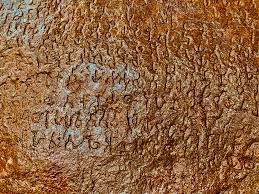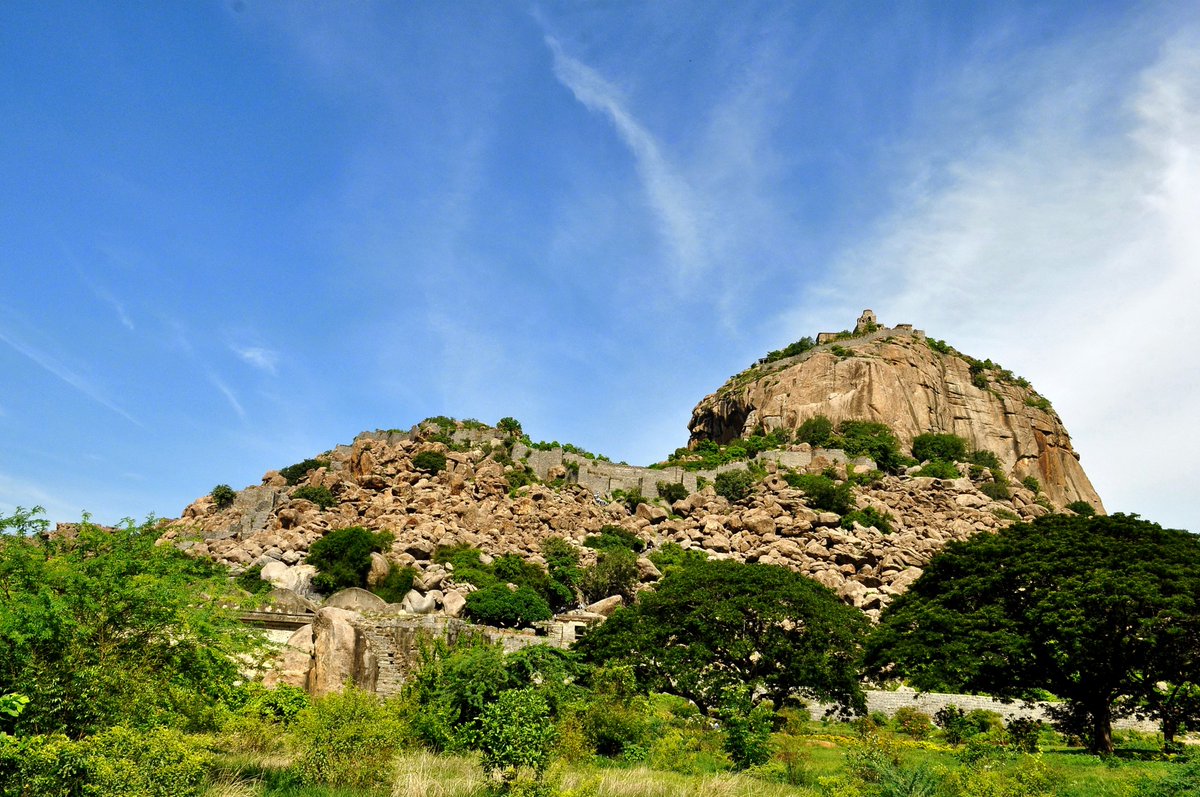
Today we know Ashoka as one of the mightiest emperors of the ancient world, whose empire stretched from Eastern India to Central Asia.
However, for centuries, the memory of the great emperor Ashoka and his empire were lost to time.
However, for centuries, the memory of the great emperor Ashoka and his empire were lost to time.
An accidental discovery of an ancient inscription written in an enigmatic script spurred the search for the identity of a forgotten king and the deciphering of the lost language.
The subsequent hunt led to the discovery of the Brahmi script, and eventually, it led to the identity of Emperor Ashoka and his empire as it existed in the 2nd century BCE.
These 14 inscriptions shed light on the political philosophy of Ashoka, the geography of his empire, his understanding of Vedic & Shramana traditions, influences of Buddhism, Hinduism & Jainism, his relations with the Persians, the Greek-Roman world, and his vision for his public
Following are highlights of each of the 14 inscriptions of Ashoka.
1.
In first inscription, Ashoka desists the practice of the Slaughter, and he further commands judicious selection of animals according to the purpose.
In first inscription, Ashoka desists the practice of the Slaughter, and he further commands judicious selection of animals according to the purpose.
2.
Ashoka emphasizes the importance of planting and encourages the collection of medicinal herbs required by humans and animals.
This edict mentions the Pandyas, Satyapuras and Keralaputras of South India
Ashoka emphasizes the importance of planting and encourages the collection of medicinal herbs required by humans and animals.
This edict mentions the Pandyas, Satyapuras and Keralaputras of South India
3.
Ashoka defines dhamma as the following: serve and respect your parents, elders, friends, relatives, and honor and take care of
He mentions that a Brahman is someone a very learned one, and Shraman is the learned one who has renounced everything.
Ashoka defines dhamma as the following: serve and respect your parents, elders, friends, relatives, and honor and take care of
He mentions that a Brahman is someone a very learned one, and Shraman is the learned one who has renounced everything.
4.
Ashoka says that the spread of dhamma through education and conviction (not through enforcement) has gradually changed people's thinking.
Ashoka says that the spread of dhamma through education and conviction (not through enforcement) has gradually changed people's thinking.
5.
The nomination of Dhammamahamatras —knowledgeable and respected individuals whose job is to spread dhamma among the public.
The nomination of Dhammamahamatras —knowledgeable and respected individuals whose job is to spread dhamma among the public.
6.
In the 6th Inscription, Ashoka mulls over a king's duties. He mentions that it is his (Samrat's) duty to be available for his people all the time – irrespective of what he may be doing.
He expresses his desire to work relentlessly (without "Trupti") for his people.
In the 6th Inscription, Ashoka mulls over a king's duties. He mentions that it is his (Samrat's) duty to be available for his people all the time – irrespective of what he may be doing.
He expresses his desire to work relentlessly (without "Trupti") for his people.
7.
Ashoka declares that the people of all genders, Panth, or religions are welcome to continue living in his state with their respective dhamma-shraddha.
There is a mention of policies for the public in his and his neighboring kingdoms.
Ashoka declares that the people of all genders, Panth, or religions are welcome to continue living in his state with their respective dhamma-shraddha.
There is a mention of policies for the public in his and his neighboring kingdoms.
8.
Along with the description of his visit to Bodhgaya, there is something about "Vana-bhojana" - hunting of animals is no more practiced. Instead, whenever the king goes to the forest, he gifts the Brahman, Shraman and seeks their advice on adhering to dhamma.
Along with the description of his visit to Bodhgaya, there is something about "Vana-bhojana" - hunting of animals is no more practiced. Instead, whenever the king goes to the forest, he gifts the Brahman, Shraman and seeks their advice on adhering to dhamma.
9.
In the 9th inscription, Ashoka denounces popular religious ceremonies and their excesses. He instead places a premium on following the dhamma in day-to-day life and urges to help Bhrahmanas and Shramanas.
Dhan/Arth (Finance) is as important as
Dhamma.
In the 9th inscription, Ashoka denounces popular religious ceremonies and their excesses. He instead places a premium on following the dhamma in day-to-day life and urges to help Bhrahmanas and Shramanas.
Dhan/Arth (Finance) is as important as
Dhamma.
10.
Ashoka denounces the pursuit of fame and a selfish chase for success.
Ashoka denounces the pursuit of fame and a selfish chase for success.
11.
Ashoka once again emphasizes the significance of Dhamma, and says that it is the best policy to follow.
Ashoka once again emphasizes the significance of Dhamma, and says that it is the best policy to follow.
12.
Respect all cults, vansh, and religions without expecting anything in return.
It's advised to practice Vak-sayyam.(वाक्संयम)
Vak (वाक्) - sayyam (संयम) means speaking with restraint and kindness and abstaining from hurtful speech (#HateSpeech ?)
Respect all cults, vansh, and religions without expecting anything in return.
It's advised to practice Vak-sayyam.(वाक्संयम)
Vak (वाक्) - sayyam (संयम) means speaking with restraint and kindness and abstaining from hurtful speech (#HateSpeech ?)
12 (cont.)
It reiterates the concept of वादे वादे जयते बोध: (Upanishads) and advises having interactions, dialogues where ideas, principles, and thoughts are exchanged.
It reiterates the concept of वादे वादे जयते बोध: (Upanishads) and advises having interactions, dialogues where ideas, principles, and thoughts are exchanged.
13.
The 13th inscription is an immensely important one.
It mentions the war of Kalinga, Ashoka’s victories over Kings Antiochus of Syria (Amtiyoko), Ptolemy of Egypt (Turamaye), Magas of Cyrene (Maka), Antigonus of Macedon (Amtikini), Alexander of Epirus (Alikasudaro).
The 13th inscription is an immensely important one.
It mentions the war of Kalinga, Ashoka’s victories over Kings Antiochus of Syria (Amtiyoko), Ptolemy of Egypt (Turamaye), Magas of Cyrene (Maka), Antigonus of Macedon (Amtikini), Alexander of Epirus (Alikasudaro).
This inscription amply illustrates the warrior side of the emperor Ashoka and hints at the change that the toll of the war brought in him. And from victories of the war, the inscription moves towards the path of dhamma.
13. (continued)
It then asserts that Ahimsa (अहिंसा - Nonviolence) and Sat (सत् - Truth or Righteousness) are integral to dhamma.
There is an emphasis on Satsat Vivekbuddhi (सत् सद विवेकबुद्धी) - following the path of truth with love, respect, and compassion for all.
It then asserts that Ahimsa (अहिंसा - Nonviolence) and Sat (सत् - Truth or Righteousness) are integral to dhamma.
There is an emphasis on Satsat Vivekbuddhi (सत् सद विवेकबुद्धी) - following the path of truth with love, respect, and compassion for all.
14.
An epilogue of sorts, the 14th inscription goes into the purpose of the endeavor.
Ashoka extolls the Society that is formed based on Prem (प्रेम - love), Daya (दया - compassion), Mardav (मार्दव - Kindness), and Audaryaa (औदार्य - Generosity).
An epilogue of sorts, the 14th inscription goes into the purpose of the endeavor.
Ashoka extolls the Society that is formed based on Prem (प्रेम - love), Daya (दया - compassion), Mardav (मार्दव - Kindness), and Audaryaa (औदार्य - Generosity).
This thread is based on the recent talk on 14 inscriptions of Ashoka, which was delivered by @patwardhanb.
• • •
Missing some Tweet in this thread? You can try to
force a refresh








